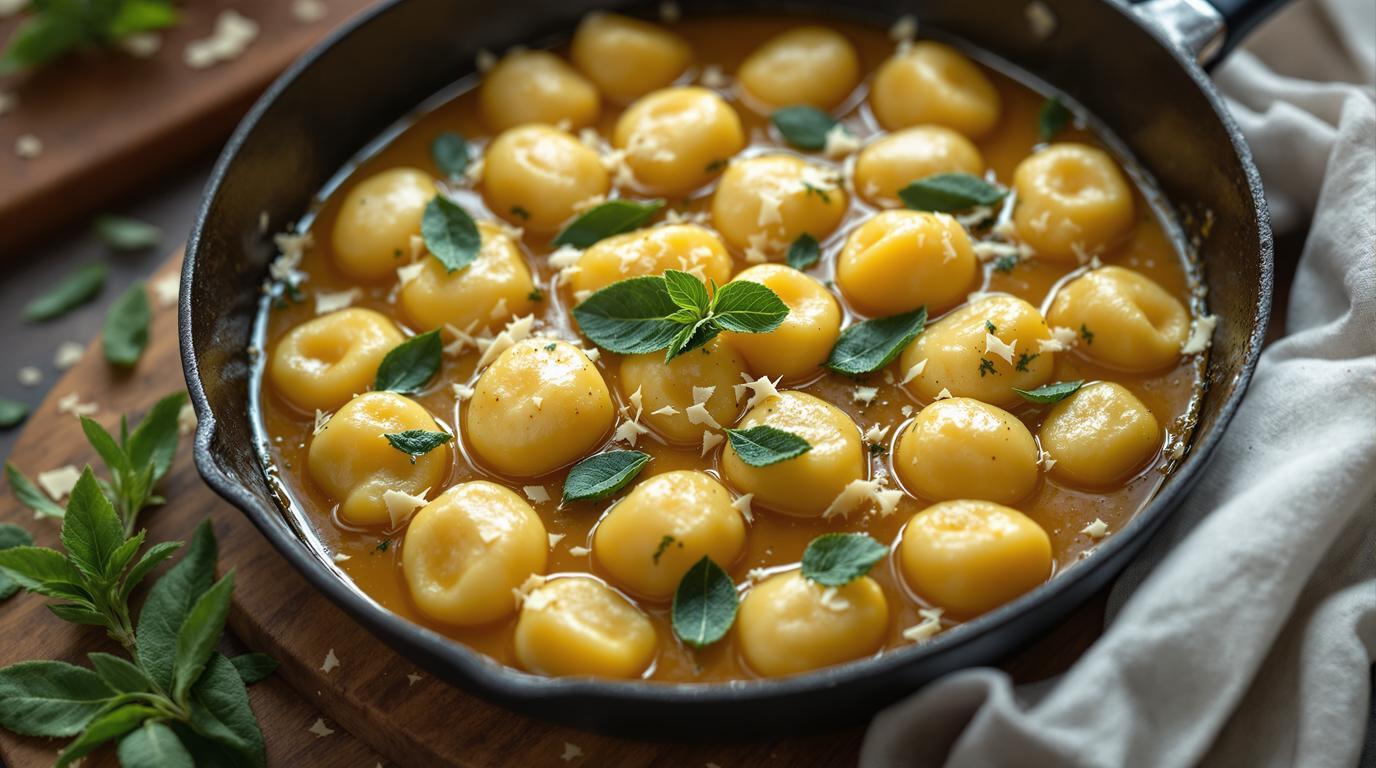The first time I encountered potato gnocchi made the traditional way—using a technique passed down through generations—I was standing in a tiny kitchen in Lyon with a 78-year-old grandmother who refused to measure anything. “Les pommes de terre vous parlent,” she insisted. The potatoes speak to you. After years of perfecting this dish across continents, I’ve discovered she was absolutely right. The key to ethereal gnocchi isn’t in exact measurements but in understanding the dialogue between potato and flour. Today, I’m sharing my interpretation of a recipe that transforms humble potatoes into pillowy clouds that melt in your mouth.
The Story
Gnocchi originated in Italy but found a special place in French regional cooking, where each family guarded their own adaptation. Unlike Italian versions that often rely on egg yolks and more flour, the French grandmother-style approach focuses on potato quality and minimal handling. What makes this version special is the baking method—a technique that removes excess moisture and intensifies the potato flavor in ways boiling simply cannot achieve.
Ingredients Spotlight
• 600g (about 1.3 lbs) starchy potatoes (Russet or Yukon Gold)
• 70-100g (½-⅔ cup) all-purpose flour, plus extra for dusting
• 1 large egg, lightly beaten
• 3 tbsp freshly grated Parmesan cheese
• ½ tsp sea salt
• Pinch of freshly grated nutmeg (optional)
Step-by-Step Guide
1. Preheat your oven to 400°F (200°C). Wash the potatoes and prick them several times with a fork. Place directly on the oven rack and bake for 35-40 minutes until completely tender when pierced with a knife.
2. While still hot (use a kitchen towel to handle them), cut the potatoes in half and scoop out the flesh. This is crucial—working with hot potatoes prevents them from becoming gummy.
3. Pass the potato flesh through a ricer or food mill onto a clean work surface. Never use a food processor, which would destroy the texture. Create a well in the center of your potato mound.
4. Add the egg, Parmesan, salt, and nutmeg (if using) to the well. Sprinkle 70g of flour over the mixture and begin to incorporate everything using a bench scraper, gently folding rather than kneading.
5. Test the dough by pinching a small piece—it should feel slightly sticky but hold together. Add more flour only if necessary, a tablespoon at a time. Remember that the less flour you use, the lighter your gnocchi will be.
6. Divide the dough into 4-6 portions. On a lightly floured surface, roll each portion into a rope about ¾-inch (2cm) thick. Cut into 1-inch (2.5cm) pieces.
7. For traditional ridges, press each piece gently against the back of a fork or a gnocchi board, rolling it downward. This creates grooves that capture sauce beautifully.
8. Bring a large pot of generously salted water to a gentle boil. Cook the gnocchi in batches until they float to the surface, about 2-3 minutes. Remove with a slotted spoon.
Expert Techniques
The difference between good gnocchi and transcendent gnocchi lies in three critical techniques. First, always bake rather than boil your potatoes—this reduces moisture by up to 40%, resulting in a lighter dough that requires less flour. Second, use a light touch when mixing; overworking develops gluten and creates chewy, dense results. Finally, test-cook a single gnocco before committing your entire batch—this allows you to adjust the flour ratio if needed.
Chef’s Note: I once made the mistake of refrigerating my formed gnocchi overnight, thinking I was being efficient. The next day, they had turned into dense, gummy lumps. Fresh gnocchi should be cooked within 30 minutes of forming, or freeze them immediately on a parchment-lined tray and transfer to freezer bags once solid. They can be cooked directly from frozen—just add about 1 minute to the cooking time.
Presentation & Pairing Ideas
My favorite way to serve these cloud-like pillows is with brown butter sage sauce—simply melt 6 tablespoons of butter until it develops a nutty aroma and golden-brown color, then add 8-10 fresh sage leaves and a squeeze of lemon juice. For a heartier option, try a wild mushroom ragout or toss with a light cream sauce. Finish with additional grated Parmesan and cracked black pepper.
For a complete experience, pair with a crisp Alsatian Riesling or light Burgundy Pinot Noir. The contrast between the delicate potato parcels and the bright acidity of these wines creates a perfect harmony that elevates the humble gnocchi to dinner party status.
Make this recipe your own by playing with different herbs in the dough or experimenting with seasonal toppings. In summer, try fresh peas and mint; in fall, roasted butternut squash and crispy pancetta. The versatility of these pillowy bites is what makes them a staple in my kitchen—and soon, I hope, in yours too.
